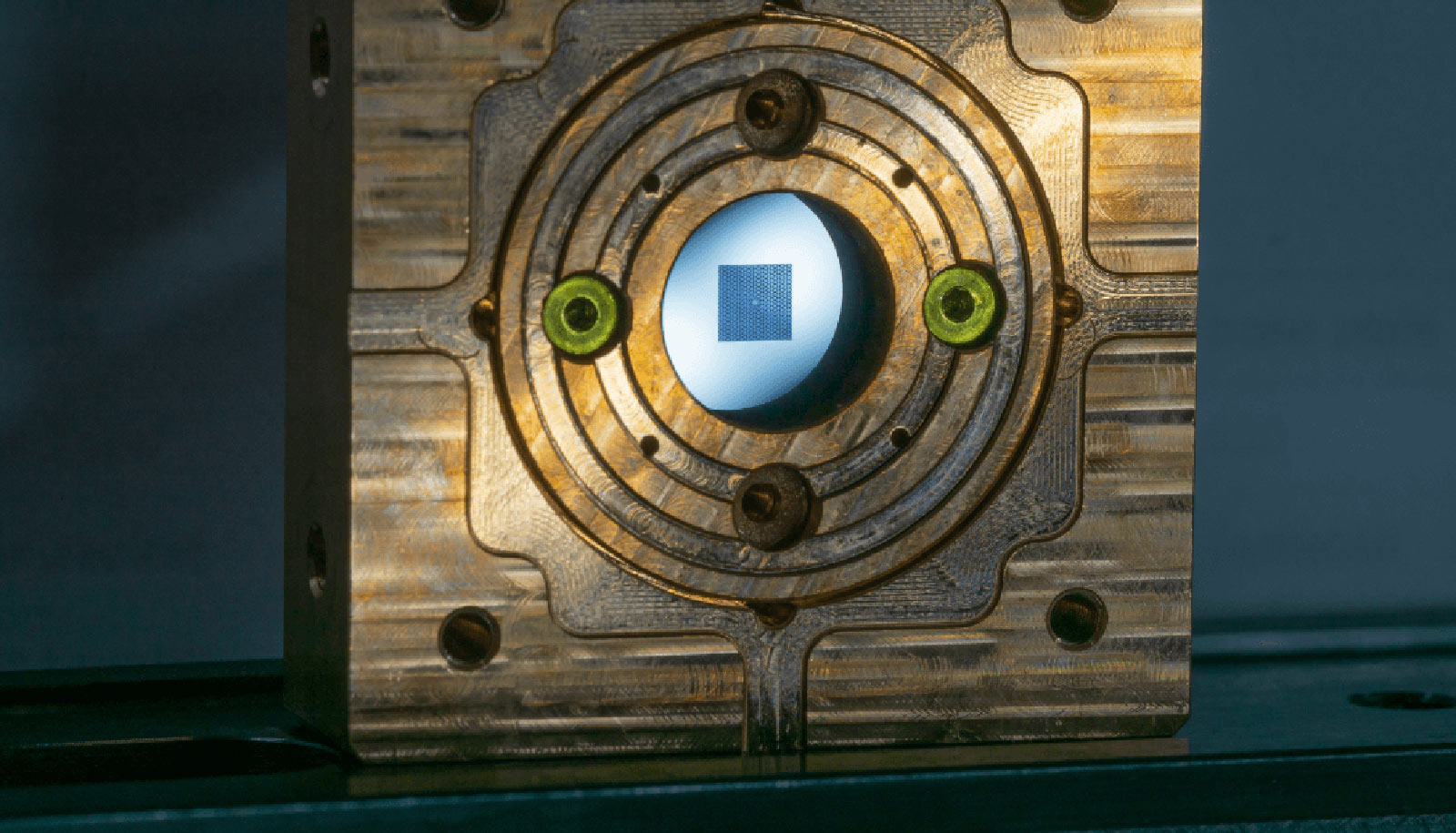Researchers have developed a tiny wireless photonic sensor that can record environmental data.
The photonic sensors recorded data during the spring of 2017 under two scenarios: a real-time measurement of air temperature over 12 hours, and an aerial mapping of temperature distribution with a sensor mounted on a drone in a St. Louis city park.
Researchers paired the sensor with a commercial thermometer with a Bluetooth connection for comparison purposes and found the two compared favorably.
Small and super sensitive
In the world of the “internet of things,” there are vast numbers of spatially distributed wireless sensors predominately based on electronics. However, electromagnetic interference, such as disturbed audio or visual signals caused by a low-flying airplane or a kitchen grinder causing unwanted noise on a radio, often hamper these devices.
Optical sensors are “immune to electromagnetical interference and can provide a significant advantage in harsh environments,” says Lan Yang, professor of electrical & systems engineering in the School of Engineering & Applied Science at Washington University in St. Louis.
“Optical sensors based on resonators show small footprints, extreme sensitivity, and a number of functionalities, all of which lend capability and flexibility to wireless sensors,” Yang says. “Our work could pave the way to large-scale application of WGM sensors throughout the internet.”
The new sensor belongs to a category called whispering gallery mode resonators, so named because they work like the whispering gallery in St. Paul’s Cathedral in London, where someone on one side of the dome can hear a message spoken to the wall by someone on the other side. Unlike the dome, which has resonances or sweet spots in the audible range, the sensor resonates at light frequencies and also at vibrational or mechanical frequencies, as Yang and her collaborators recently showed.
“The sensor itself is made of glass and is the size of just one human hair…”
“In contrast to existing table-sized lab equipment, the mainboard of the WGM sensor is a mere 127 millimeters by 67 millimeters—roughly 5 inches by 2.5 inches—and integrates the entire architecture of the sensor system,” says first author Xiangyi Xu, a graduate student in Yang’s lab.
“The sensor itself is made of glass and is the size of just one human hair; it is connected to the mainboard by a single optical fiber,” Xu says. “A laser light is used to probe a WGM sensor. Light coupled out of the sensor is sent to a photodetector with a transmission amplifier. A processor controls peripherals such as the laser current drive, monitoring circuit, thermo-electric cooler, and Wi-Fi unit.
In the new WGM, light propagates along the circular rim of a structure by constant internal reflection. Inside the circular rim, light rotates 1 million times. Over that space, light waves detect environmental changes, such as temperature and humidity, for example. A customized operating systems app that controls the remote system and collects and analyzes sensing signals monitors the sensor node.
The benefits of being light-based
Wireless sensors, whether electronic or photonic (light-based), can monitor such environmental factors as humidity, temperature, and air pressure. Applications for wireless sensors encompass environmental and health-care monitoring, precision agricultural practices, and smart cities’ data-gathering, among other possibilities.
Smart cities are connected cities driven by internet data-harvesting. Precision agriculture uses digitized geographic information systems for precision agricultural practices such as soil mapping, which enables precise fertilizer and chemical applications and choice of seed selection for more efficient and profitable farming.
Yang and colleagues had to address stability issues, which the customized operation systems app handled, and miniaturization of bulky laboratory measurement systems.
“We developed a smartphone app to control the sensing system over WiFi,” Yang says. “By connecting the sensor system to the internet, we can realize real-time remote control of the system.”
In June 2017, Yang and her group mounted the whole system on the outside wall of a building and accumulated a plot of the frequency shift of the resonance. They compared their data with the commercial thermometer.
“Thanks to their small size, the capability and flexibility of wireless photonic sensors can be improved by making them mobile,” Yang says.
The researchers also mounted their system on an unmanned drone in May 2017 alongside the commercial thermometer. When the drone flew from one measurement location to others, the resonance frequency of the WGM shifted in response to temperature variations.
“The measurements matched well with results from the commercial thermometer,” she says. “The successful demonstrations show the potential applications of our wireless WGM sensor in the IoT. There are numerous promising sensing applications possible with WGM technology, including magnetic, acoustic, environmental, and medical sensing.”
The miniaturization of resonator sensing systems represents an exciting opportunity for IoT, as it will enable IoT to exploit a new class of photonic sensors with unprecedented sensitivity and capabilities,” says Chenyang Lu, a professor in the computer science & engineering department and a coauthor of the paper, which appears in in Light: Science and Applications.



